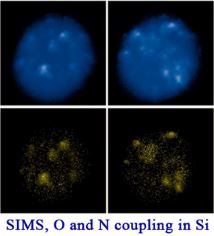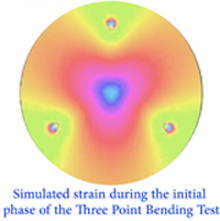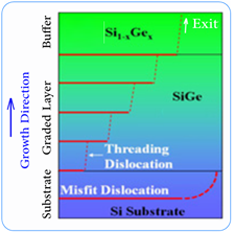Gettering of O, C, and N in Multicrystalline Solar Silicon
Goal: Analyze the gettering of Oxygen and Carbon in Solar grade N-rich Multicrystalline Silicon sheets.
In a joint research project with Astropower, we have carried out thorough diagnostics of defects in low cost multi-crystalline silicon sheets for solar cells and have investigated means for impurity gettering in such materials.

Mechanisms of Oxygen Precipitation in N-CZ Si
Goal: Study Oxygen Precipitation driven by Nitrogen Segregation and N-O Coupling in silicon.
We investigated O precipitation in very lightly N doped CZ silicon (NCZ), as a part of the global effort for introducing 300mm (and larger) silicon wafers in electronic device and integrated circuit production lines. To that end, the microelectronics industry identified the need for lowering O concentration in large Si wafers, and increasing wafer toughness by N doping (< 1014 cm-3). However, N changed the mechanisms of O precipitation in silicon. This was manifested by a drastic increase in precipitate concentration in thermal processed wafers, while there was a positive reduction of the precipitate mean size.

Mechanical Properties of Polycrystalline Silicon wafers
Goal: Analyze the mechanical properties of Ultra-Thin Polycrystalline Silicon to control Wafer Breakage and to increase Solar Cell Fabrication Yield.
There has been a continuous appeal for reducing the thickness of crystalline silicon wafers in order to cut the cost of solar cells. However, this necessity is hindered by an increased wafer breakage during solar cell fabrication on ultra-thin wafers, especially for polycrystalline silicon, a material of great hope for photovoltaics.

Time Dependent Stress, Strain, and Plasticity during SiGe Stack growth
Goal: Analyze the transient stress and strain during SiGe Stack growth and deduce the steady state plasticity.
We have analyzed mechanical properties of SiGe graded layers at the nanometer scale. Other layers caped with ultra-thin, 15nm thick, silicon films were also analyzed. The materials are either for microelectronics, Nano-opto-electronics, or for Third Generation Solar Cells.

Micro-Electro-Mechanical System (MEMS) for Handling and Processing Nanotubes and Nanorods
Goals: Develop a process and a tool for handling and processing carbon nanotubes (CNTs) to effectively use them in advanced solar cell concept. Design the tool using finite element analysis of electrokenitic of microfluidic solution containing low concentration of CNTs. Fabricate the MEMS and test the process of disantanglement, aligning, and sorting CNTs.
